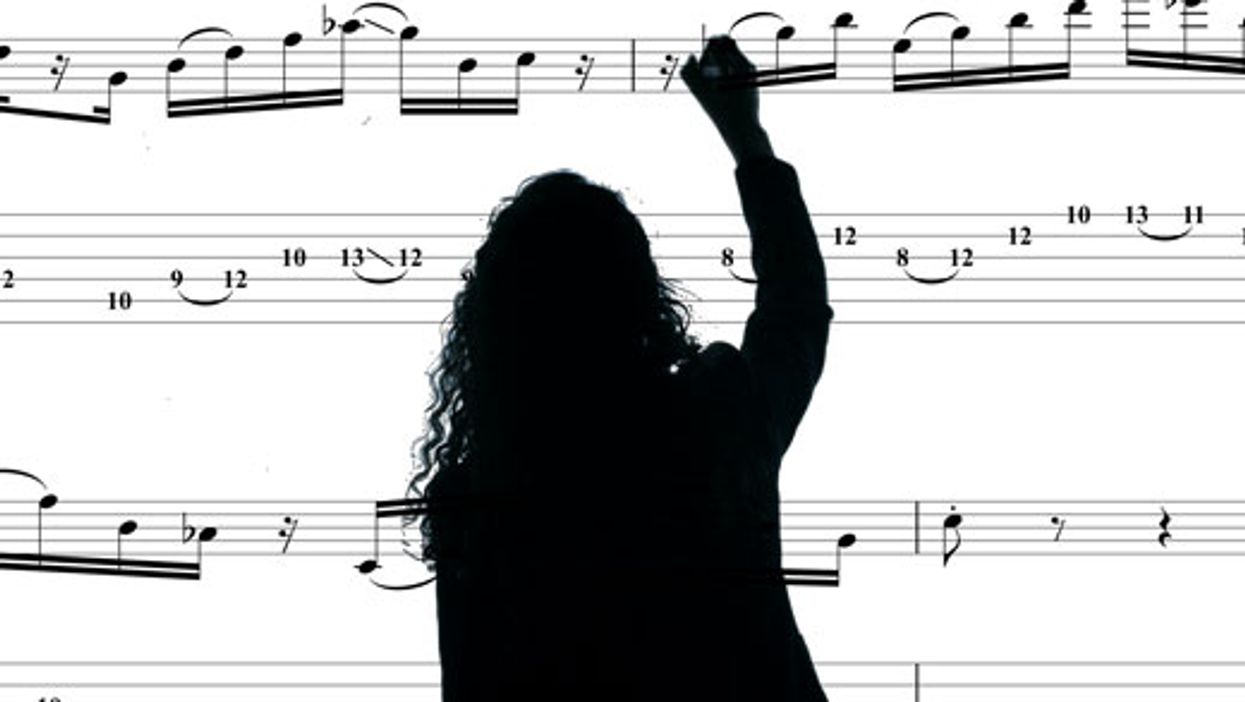Chops: Intermediate
Theory: Beginner
Lesson Overview:
• Improve the accuracy of your bends.
• Create flowing blues licks on one string.
• Combine Dorian and Mixolydian harmonies.
Click here to download a printable PDF of this lesson's notation.
One of the most exciting aspects of our instrument is how it offers a vast array of articulation options. There are so many ways we can attack a note: We can pick it with a plectrum or fingertips, we can hammer-on or pull-off to it, we can slide into it from above or below, bend up to it or release a pre-bend down to it, use a bar or EBow or tap ... the list goes on. Each approach has a unique sound, and you can shape your identity as a player by building these techniques into your personal style.
Some of you may remember that many months ago in Beyond Blues we looked at playing slide guitar in standard tuning. The more I’ve delved into slide guitar, the more I’ve found myself craving the subtle phrasing tricks I can do with a slide ... but without actually using one. This obviously isn’t something new: Jeff Beck, Michael Lee Firkins, and Jimmy Herring (though he’s more inspired by harmonica players) have all been known at one point or another for this sound.
I’ve avoided using a whammy bar in these examples, so we’ll be relying on our fingers alone to get the sounds. While the bar offers that extra touch, not everyone uses one (my main Vigier has a fixed bridge), and it never hurts to try to get the most out of the instrument we have.
All these licks are over a shuffle groove in Bb, and while the best scale for this would usually be the Bb Mixolydian scale (Bb-C-D-Eb-F-G-Ab), I’ll treat it with more of a minor-sounding vibe. This creates a Mixolydian with a b3 sound, which could be considered a Dorian tonality. The goal is, of course, to be aware of the intervals we’re targeting so we know what we can do with them.
The first lick (Ex. 1) starts in the classic minor pentatonic shape with a bend that pushes the 4 up to the 5. Then slide up to the 5 and bend up to the b7. For this three-fret bend, pay careful attention to pitch accuracy. You could add vibrato to this note, but for the sake of demonstration, I’ve kept it clean. The second half of the lick highlights how effective it can be to play melodically down (or up) along a single string.
Click here for Ex. 1
Ex. 2 also sits on a single string and sees some sliding around between the root, b3 and b7. The key here is to not overshoot the slides and stay in time. You’ll also notice the blues curls at the end of each phrase. This isn’t about hitting the note and instantly bending sharp, the note is bent sharp as it dies—that little detail is important.
Click here for Ex. 2
The next phrase in Ex. 3 is me trying to sound like Jimmy Herring trying to sound like Derek Trucks. Part of the charm of this lick is the slide into the bend. This isn’t easy and can’t really be practiced slowly—it’s just something that you get over time. From there, descend through the Bb minor pentatonic scale (Bb-Db-Eb-F-Ab) before shifting into the Bb major pentatonic (Bb-C-D-F-G). The nice trick is the last note, which is a slide down from the root to the 6. I’ll often end my licks by sliding down to the b7, but the 6 adds a really interesting vibe.
Click here for Ex. 3
Ex. 4 is inspired by Scottish guitarist Lyle Watt. (His EP is well worth checking out.) After the initial phrase, we have a slick bend from the 4 to the 5, which is then slid and bent up to the b7. Licks like this are cool, and unique to a stringed instrument like ours. (Sorry pianists!)
Click here for Ex. 4
A B.B. King-inspired phrase kicks off Ex. 5. It then ends with a slippery lick, which we played in Ex. 1, only this time we’re an octave higher. To end the phrase, bend from the root to the 9, then up to the b3 before releasing. That’s an obvious nod to players like David Gilmour or Albert King.
Click here for Ex. 5
The next lick (Ex. 6) attempts to draw influence from the mighty Derek Trucks. We slide from the b7 to the root, then pull off to the b7 but bend it straight up to the root again. To end the lick, we slide around on the 2nd string using a hybrid Dorian/Mixolydian scale. When you listen to Trucks, you’ll hear how he plays on a single string a lot, so consider experimenting with this concept.
Click here for Ex. 6
Ex. 7 starts up high and climbs even higher. We revisit the slide-into-a-bend idea again, this time moving from the 9 up to the b3 before dropping down to the root and playing the same Gilmour/King bend we played in Ex. 5, only this time up an octave.
Click here for Ex. 7
Lastly, here’s a backing track for you to try some of these ideas yourself. Remember it’s not simply about playing these licks, but transcribing and adapting your own, so keep at it!















